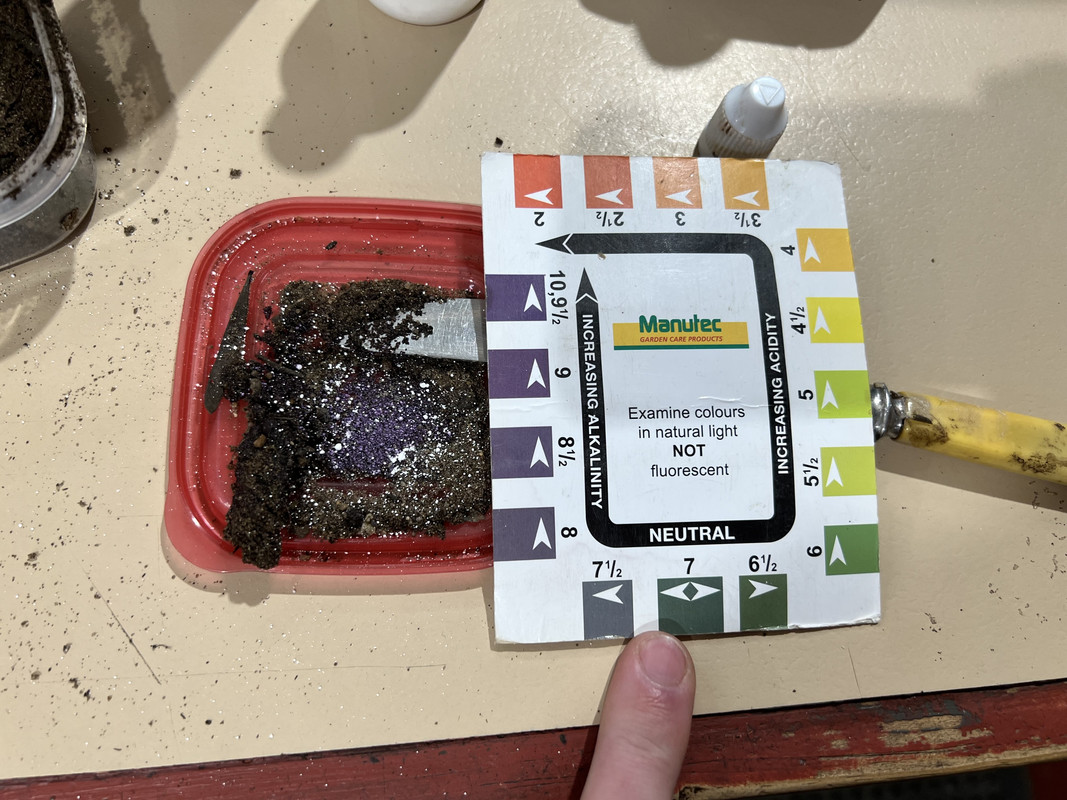Quote:
Originally Posted by Rallye Sport

Thats the one I was finding too, it could well be the same stuff but ours is in a different container.
The second one could be handy, we use a surfactant in foliar sprays so it could kill two birds with one stone. I'll have a read up on it 
It makes sense to me to adjust the pH of foliars, alot of nutrients can be locked up by pH on either end of the scale essentially just wasting time and money by putting them out in an unadjusted state. |
The pH scale is so important in horticulture, it can be extremely hard to get that across to customers.
Quite often I get a customer who asks me why their xyz plants are not growing or are looking sick. In situations like this, the first question is "is this a brand-new garden" or "did you buy in soil", the answer nine times out of ten is yes to either. To which I suggest we need to test the pH of the soil. I then get the usual line of "its great soil, it cost me a fortune" type of reply. Or "I fed the plant a few times".
It's then a matter of attempting to explain that the pH of the soil could be (and often is) out of balance and that no matter what fertilizer you apply, if the pH is not corrected, the nutrients within the soil become locked up. I then ask did the plant go backwards slowly, which is often a yes. As the plant starts to venture away from the potting mix it was grown in and exhausts the slow-release fertilizer in the mix, the plant then can't latch onto nutrients, which then begins the decline of the plant.
All of the above could and probably does in some cases come across as an excuse to sell soil additives. Some customers will listen and take it in from people who have seen this a thousand times over, others really seem to be blase about it.
So why is this a common question? Because all of the landscape suppliers in this area source their garden soil mixes from the same place. There are three components to this mix: raw soil, sand and compost from Western Composting. One of the three is causing excessive alkalinity. Two of those are variable, one is coming from the same place over and over again. I'll let you figure that one out.
In any case, people are buying or having this soil installed unknowingly, the alkalinity only shows up several months down the track in the situations explained above. The customer then has to pay for additives to remedy this situation over and above the $80+ per cubic meter they have already paid.
Below is a common sight with this soil....................


For those reading, you ideally want soil between 5 and 8 for plants to grow and flourish. Some plants like it on the acidic side, most prefer neutrality.
I'm actually ruled by the pH scale in both professional and afterhours endeavors. In detailing, the pH value of a chemical will achieve different results. If I want to cut through greasy tyre dressing or dirt, I need alkalinity above 10 for effective results. If I want to remove mineral deposits, I need acidity. If I need to be gentle and clean without stripping everything from the paint, I want neutrality.
And thus concludes today's lesson...................
